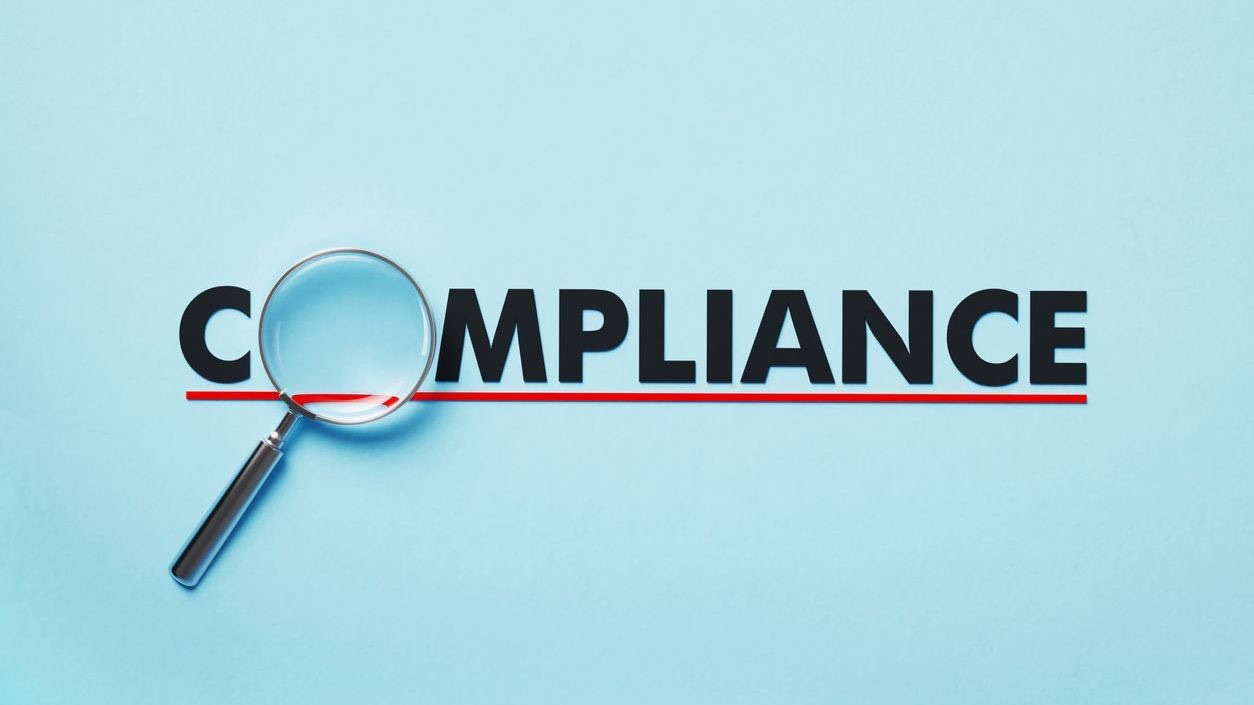Effective scheduling is the backbone of any successful pizzeria in Kennewick, Washington. From managing the rush of hungry customers during Friday night football games at Kamiakin High School to coordinating staff for catering orders to the Columbia Center Mall, pizzeria owners face unique scheduling challenges. The fast-paced environment of pizza preparation and delivery demands precise staff allocation to ensure optimal customer service while controlling labor costs. In this competitive market where establishments like Round Table Pizza, Domino’s, and local favorites compete for both customers and qualified staff, implementing robust scheduling services can be the difference between thriving and merely surviving.
Small business pizzeria owners in Kennewick must juggle multiple responsibilities while adapting to seasonal fluctuations, from the summer tourist influx along the Columbia River to the changing pace during Tri-Cities’ wine festival seasons. Without effective scheduling tools, these businesses risk overstaffing during slow periods or understaffing during unexpected rushes, both of which directly impact the bottom line. Modern scheduling solutions offer comprehensive approaches to these challenges, providing flexibility, accuracy, and strategic insights that traditional pen-and-paper methods simply cannot match.
Understanding Pizzeria Scheduling Challenges in Kennewick
Pizzeria owners in Kennewick face distinct scheduling challenges that directly impact both operational efficiency and customer satisfaction. The unique market dynamics of this Tri-Cities community create specific demands that require tailored scheduling approaches. Understanding these challenges is the first step toward implementing effective solutions that can help local pizzerias thrive in a competitive landscape.
- Seasonal Fluctuations: Kennewick experiences significant seasonal variations, with increased tourism during summer months and wine events, creating unpredictable staffing needs.
- Student Workforce: Many pizzerias rely heavily on part-time student employees from Columbia Basin College and WSU Tri-Cities, requiring flexible scheduling around academic calendars.
- Delivery Coordination: Balancing in-house staff with delivery drivers across Kennewick’s expanding residential areas requires precise timing and resource allocation.
- Special Events: Local events at the Three Rivers Convention Center and Toyota Center create surge demands that require adaptive scheduling strategies.
- Weather Impacts: Kennewick’s variable weather conditions, from summer heat to winter storms, directly affect delivery timing and customer volume patterns.
These challenges are compounded for small businesses without dedicated HR departments. Modern employee scheduling solutions can help pizzeria owners transform these challenges into opportunities by providing tools that adapt to Kennewick’s unique business environment while simplifying the complex task of staff management.
The Impact of Effective Scheduling on Pizzeria Operations
The scheduling decisions made by Kennewick pizzeria owners have far-reaching consequences beyond simply determining who works when. Effective scheduling directly influences customer satisfaction, employee retention, and profitability. By implementing strategic scheduling practices, local pizzerias can create competitive advantages in this tight-knit community where reputation spreads quickly.
- Customer Experience Enhancement: Proper staffing during peak hours ensures faster service, shorter wait times, and higher quality products, particularly crucial during rushes from nearby Southridge Sports Complex events.
- Labor Cost Control: Precision scheduling helps maintain optimal staff-to-sales ratios, preventing costly overstaffing during traditionally slower periods like mid-weekday afternoons.
- Employee Satisfaction: Consistent and fair scheduling practices increase staff retention and reduce turnover costs, particularly important in Kennewick’s competitive service industry job market.
- Operational Efficiency: Strategic scheduling ensures appropriate skill distribution across shifts, balancing experienced staff with newer employees for optimal performance.
- Compliance Management: Automated scheduling helps track hours worked, breaks taken, and overtime, ensuring compliance with Washington state labor regulations.
Research shows that optimized scheduling can reduce labor costs by up to 10% while simultaneously improving customer satisfaction. For Kennewick pizzerias operating on tight margins, these improvements can significantly impact profitability. Performance metrics for shift management can help track these improvements and identify areas for continued optimization.
Essential Features of Pizzeria Scheduling Software
When selecting scheduling software for a Kennewick pizzeria, owners should prioritize features that address their specific operational needs. Not all scheduling solutions are created equal, and identifying the right combination of features can dramatically improve management efficiency while reducing administrative burdens. Modern scheduling platforms offer specialized tools designed specifically for food service businesses.
- Mobile Accessibility: Staff can view schedules, request time off, and swap shifts from smartphones, essential for the predominantly younger workforce in Kennewick pizzerias.
- Shift Swapping Capabilities: Allows employees to trade shifts with manager approval, solving last-minute coverage issues without requiring owner intervention.
- Real-time Updates: Instantly communicate schedule changes to all affected staff, crucial during unexpected weather events or sudden busy periods in Kennewick.
- Forecasting Tools: Predict busy periods based on historical data, local events calendars, and weather forecasts specific to the Tri-Cities region.
- Labor Cost Tracking: Monitor scheduled hours against budgeted labor costs to maintain profitability targets unique to the local market.
Integration capabilities are equally important, as benefits of integrated systems include seamless connection with POS systems, payroll software, and time-tracking tools. This integration eliminates duplicate data entry and reduces administrative errors that can affect both employee paychecks and business reporting. Small business pizzerias should look for scheduling platforms that offer these integrations without requiring enterprise-level investments.
Implementing a Shift Marketplace for Pizzeria Flexibility
One of the most innovative developments in pizzeria scheduling is the concept of a shift marketplace, which creates a flexible internal labor pool. This approach is particularly valuable for Kennewick pizzerias that experience variable staffing needs due to seasonal tourism fluctuations and local events. A shift marketplace transforms traditional rigid scheduling into a dynamic system that benefits both employees and management.
- Coverage Assurance: Open shifts can be quickly filled from a pool of qualified and interested employees, reducing manager time spent finding replacements.
- Employee Empowerment: Staff gain more control over their work schedules, allowing them to balance jobs with studies at local institutions like CBC or family commitments.
- Skills Optimization: Managers can specify required skills for each shift, ensuring proper coverage of specialized roles like dough preparation or delivery driving.
- Peak Period Staffing: Additional shifts can be created and offered during unexpectedly busy periods, such as when local sports teams advance to championships.
- Cross-training Opportunities: Employees can pick up shifts in different roles, expanding their skills and increasing the pizzeria’s staffing flexibility.
A shift marketplace system transforms the traditional concept of fixed schedules into a more agile approach that aligns with the modern workforce’s desire for flexibility. Kennewick pizzeria owners report higher employee satisfaction and lower turnover rates after implementing these systems, as they accommodate the work-life balance priorities of their staff while ensuring business needs are met consistently.
Improving Team Communication Through Scheduling Platforms
Effective communication is essential in fast-paced pizzeria environments where timing and coordination directly impact customer experience. Traditional communication methods like bulletin boards, text message chains, or social media groups often create information gaps and misunderstandings. Modern scheduling platforms incorporate robust communication features that centralize and streamline team interactions.
- Centralized Messaging: All schedule-related communications are stored in one accessible location, eliminating confusion about the latest updates.
- Shift Notes: Managers can attach specific instructions to shifts, such as special pizza promotions or catering preparations for local Kennewick businesses.
- Targeted Announcements: Send information to specific employee groups, such as delivery drivers needing to know about road closures during Kennewick’s summer road construction.
- Confirmation Requirements: Ensure critical information is received and acknowledged by requiring employee confirmation of important notices.
- Historical Records: Maintain searchable communication archives for reference and accountability, particularly valuable for training new managers.
By integrating team communication with scheduling functions, pizzeria managers in Kennewick can significantly reduce the time spent coordinating with staff and decrease the likelihood of miscommunications. This integration is particularly valuable for pizzerias with multiple locations across the Tri-Cities area, as it maintains consistent communication standards across the operation while accommodating location-specific needs.
Adapting to Seasonal Demand Patterns in Kennewick
Kennewick’s distinct seasonal patterns create predictable yet challenging fluctuations in pizzeria demand throughout the year. From summer tourism along the Columbia River to winter holidays and local events, these seasonal changes require proactive scheduling adjustments. Advanced scheduling services offer tools to help pizzeria owners anticipate and prepare for these cyclical changes rather than merely reacting to them.
- Historical Data Analysis: Review past years’ sales data to identify patterns associated with local events like the Benton-Franklin Fair or Boat Race weekends.
- Staffing Level Templates: Create season-specific staffing templates that can be quickly deployed as demand patterns shift throughout the year.
- Advanced Notice Periods: Implement longer schedule posting timeframes during predictable high-demand periods to ensure adequate staffing.
- Temporary Staff Management: Integrate seasonal employees seamlessly into scheduling systems during peak tourism months or holiday rushes.
- Weather-Based Adjustments: Incorporate weather forecasts into scheduling decisions, particularly for delivery services during Kennewick’s varied climate conditions.
Using seasonality insights and demand forecasting tools, pizzeria managers can create more accurate schedules weeks in advance, giving employees better work-life balance while ensuring the business remains adequately staffed during critical periods. This forward-looking approach transforms seasonal challenges into opportunities for operational excellence and competitive advantage in Kennewick’s vibrant food service market.
Compliance with Washington State Labor Regulations
Navigating Washington state’s labor laws presents significant compliance challenges for Kennewick pizzeria owners. These regulations impact scheduling practices, required break periods, overtime calculations, and minor employment restrictions. Modern scheduling software can help small businesses maintain compliance while reducing administrative burdens and potential legal risks.
- Break Management: Automatically schedule and track required meal and rest breaks according to Washington state requirements for shifts of various lengths.
- Minor Work Restrictions: Enforce scheduling limitations for employees under 18, particularly important for pizzerias employing high school students from Kennewick, Southridge, or Kamiakin High Schools.
- Overtime Calculation: Track approaching overtime thresholds and alert managers before scheduling decisions trigger premium pay requirements.
- Record Keeping: Maintain digital records of all scheduling changes, time worked, and break compliance for required documentation periods.
- Regulatory Updates: Receive automatic updates when labor regulations change, ensuring ongoing compliance without constant legal monitoring.
Implementing scheduling software with strong labor compliance features helps Kennewick pizzeria owners avoid costly penalties and legal issues while creating fair working environments for their staff. These systems can automatically flag potential compliance issues before schedules are published, allowing managers to make necessary adjustments proactively rather than dealing with violations after they occur.
Optimizing Delivery Driver Scheduling for Kennewick’s Geography
Kennewick’s diverse geography, from densely populated areas near Columbia Center Mall to more sprawling residential developments in Southridge, creates unique challenges for pizzeria delivery operations. Strategic driver scheduling can significantly impact delivery times, customer satisfaction, and operational costs. Advanced scheduling systems offer specialized features for managing delivery teams effectively across Kennewick’s varied landscapes.
- Zone-Based Scheduling: Assign drivers to specific delivery zones based on order volume patterns across different Kennewick neighborhoods.
- Traffic Pattern Analysis: Incorporate historical traffic data to optimize driver scheduling during high-congestion periods on Columbia Center Boulevard or Highway 395.
- Driver Skill Tracking: Match experienced drivers with challenging delivery areas or complex large orders for corporate clients in the business district.
- Overlapping Coverage: Schedule strategic shift overlaps during transition periods to maintain consistent delivery performance throughout operating hours.
- Real-Time Adjustment Capabilities: Enable quick reallocation of drivers when unexpected order clusters emerge in specific neighborhoods.
Effective delivery driver scheduling directly impacts customer satisfaction and operational efficiency. By implementing transportation crew scheduling best practices through dedicated scheduling software, Kennewick pizzerias can reduce delivery times while optimizing driver productivity and vehicle utilization. These improvements lead to better customer experiences, increased repeat business, and stronger word-of-mouth referrals in this close-knit community.
Selecting the Right Scheduling Solution for Your Kennewick Pizzeria
With numerous scheduling options available, Kennewick pizzeria owners must carefully evaluate which solution best fits their specific business needs, technical capabilities, and budget constraints. The right choice depends on factors including business size, growth plans, existing technology systems, and staff preferences. Consider these essential evaluation criteria when selecting a scheduling platform for your pizzeria operation.
- Scalability: Choose a solution that can grow with your business, particularly important for pizzerias planning to expand to additional Tri-Cities locations.
- Implementation Support: Evaluate the level of onboarding assistance, training resources, and ongoing support provided by the vendor.
- Integration Capabilities: Ensure compatibility with existing POS systems, payroll software, and other business tools already in use.
- User Experience: Test the interface for both managers and staff to confirm it’s intuitive and accessible for all technical skill levels.
- ROI Potential: Calculate the expected return on investment through labor cost savings, reduced overtime, and improved operational efficiency.
Many scheduling platforms offer free trials or demonstrations that allow pizzeria owners to test functionality before committing. Take advantage of these opportunities to gather feedback from both management and staff who will use the system daily. Selecting the right scheduling software is a critical business decision that can significantly impact operational efficiency and staff satisfaction for years to come.
Training and Adoption Strategies for Scheduling Systems
Even the most powerful scheduling solution will fail to deliver results if staff and managers don’t fully adopt and utilize its features. Implementing a comprehensive training and adoption strategy ensures your team maximizes the benefits of your scheduling investment. This is particularly important in pizzerias with diverse staff demographics, from tech-savvy college students to long-term employees who may be less comfortable with digital tools.
- Phased Implementation: Introduce features gradually rather than overwhelming staff with a complete system change all at once.
- Customized Training: Offer different training approaches based on role and technical comfort level, from in-person sessions to video tutorials.
- Champion Development: Identify tech-savvy staff members who can serve as system experts and provide peer support.
- Clear Benefits Communication: Help employees understand how the new system makes their work lives easier and more predictable.
- Feedback Mechanisms: Establish channels for staff to report issues and suggest improvements to the scheduling process.
Successful adoption requires consistent management commitment and regular reinforcement of system usage. By developing comprehensive implementation and training programs, pizzeria owners can accelerate the transition period and begin realizing returns on their scheduling technology investment more quickly. Long-term success depends on creating a culture where digital scheduling becomes an integral part of daily operations rather than an optional tool.
Measuring Success: Key Performance Indicators for Scheduling
To evaluate the effectiveness of scheduling improvements, Kennewick pizzeria owners should establish clear performance metrics that align with their specific business goals. These metrics provide objective measures of success and highlight areas for continued refinement. Regular monitoring of these KPIs transforms scheduling from a reactive administrative function into a strategic business advantage.
- Labor Cost Percentage: Track labor costs as a percentage of sales to ensure scheduling decisions maintain profitability targets.
- Schedule Adherence: Measure how closely actual hours worked match scheduled hours to identify attendance patterns and coverage issues.
- Staff Satisfaction Scores: Conduct regular surveys to assess employee satisfaction with scheduling practices and work-life balance.
- Customer Service Metrics: Monitor delivery times, order accuracy, and customer feedback to correlate with staffing levels.
- Manager Time Savings: Calculate hours saved on administrative scheduling tasks that can be redirected to customer service or staff development.
Advanced scheduling platforms offer built-in analytics and reporting and analytics features that automatically generate these metrics with minimal manual effort. By establishing baseline measurements before implementing new scheduling systems and tracking changes over time, pizzeria owners can quantify their return on investment and make data-driven adjustments to further optimize their scheduling strategies.
Conclusion: Transforming Pizzeria Operations Through Effective Scheduling
Implementing advanced scheduling services represents a significant opportunity for Kennewick pizzeria owners to transform their operations, enhance customer experiences, and improve profitability. By addressing the unique scheduling challenges faced in the Tri-Cities market, these businesses can create competitive advantages that support long-term success. The benefits extend beyond mere administrative convenience to impact core business performance metrics and staff satisfaction.
The transition from traditional scheduling methods to modern digital solutions may require initial investment and adaptation, but the returns are substantial and measurable. Pizzerias that embrace comprehensive scheduling tools like Shyft position themselves for greater operational efficiency, better compliance with labor regulations, improved staff retention, and enhanced customer service. In Kennewick’s competitive food service market, these advantages can make the critical difference between a pizzeria that merely survives and one that consistently thrives through all seasonal fluctuations and market challenges.
FAQ
1. How can scheduling software help my Kennewick pizzeria reduce labor costs?
Scheduling software helps reduce labor costs through several mechanisms. It prevents unintentional overtime by tracking hours and alerting managers before thresholds are crossed. The software enables precise matching of staffing levels to historical demand patterns, preventing overstaffing during slow periods. It also reduces administrative time spent creating and adjusting schedules, allowing managers to focus on customer service and operational improvements. Additionally, some platforms offer forecasting tools that can predict busy periods based on factors like local events, weather, and historical data specific to Kennewick, enabling more strategic labor allocation.
2. What features should I prioritize when selecting scheduling software for my pizzeria?
Priority features should include mobile accessibility for your staff, especially if you employ many college students; shift swapping capabilities to reduce manager involvement in coverage issues; real-time notifications to keep everyone informed of changes; integration with your existing POS and payroll systems; labor compliance tools specific to Washington state regulations; and analytics that help optimize labor costs. Additionally, look for platforms with intuitive interfaces that require minimal training, as staff turnover in pizzerias can be high. The best solution will balance comprehensive functionality with ease of use for both managers and employees.
3. How can I ensure my staff will actually use a new scheduling system?
Successful adoption requires a thoughtful implementation strategy. Start by clearly communicating the benefits to staff, emphasizing how the system makes their lives easier through features like mobile access and shift swapping. Provide multiple training options including hands-on sessions, video tutorials, and written guides to accommodate different learning styles. Identify tech-savvy employees who can serve as system champions to help their peers. Begin with core features and gradually introduce advanced functionality to prevent overwhelming users. Establish a feedback mechanism so staff can report issues and suggest improvements. Finally, lead by example with managers consistently using the system for all scheduling functions rather than reverting to old methods.
4. How do I handle scheduling for delivery drivers effectively in Kennewick?
Effective delivery driver scheduling in Kennewick requires consideration of several factors. Use historical order data to identify peak delivery times by neighborhood, scheduling more drivers during these periods. Consider Kennewick’s geography and traffic patterns, particularly around congested areas like Columbia Center Boulevard during rush hour or during construction seasons. Implement zone-based scheduling to optimize delivery routes and reduce drive times. Track driver performance metrics to match more experienced drivers with challenging routes or large orders. Create overlapping shifts during transition periods to maintain consistent delivery times throughout service hours. Finally, ensure your scheduling system allows for quick adjustments when unexpected order clusters emerge in specific areas of the city.
5. What ROI can I expect from implementing scheduling software in my pizzeria?
Return on investment from scheduling software typically comes from multiple sources. Labor cost savings of 3-10% are common through more precise staffing and reduced overtime. Manager time spent on scheduling can decrease by 70-80%, freeing them for customer service and training activities. Employee turnover costs often decrease by 10-20% due to improved schedule consistency and work-life balance. Compliance-related savings come from avoiding penalties and legal costs associated with labor violations. Additionally, many pizzerias report increased sales from improved customer service resulting from appropriate staffing levels. While implementation requires initial investment in software and training, most Kennewick pizzerias can expect to see positive ROI within 3-6 months of full adoption.












